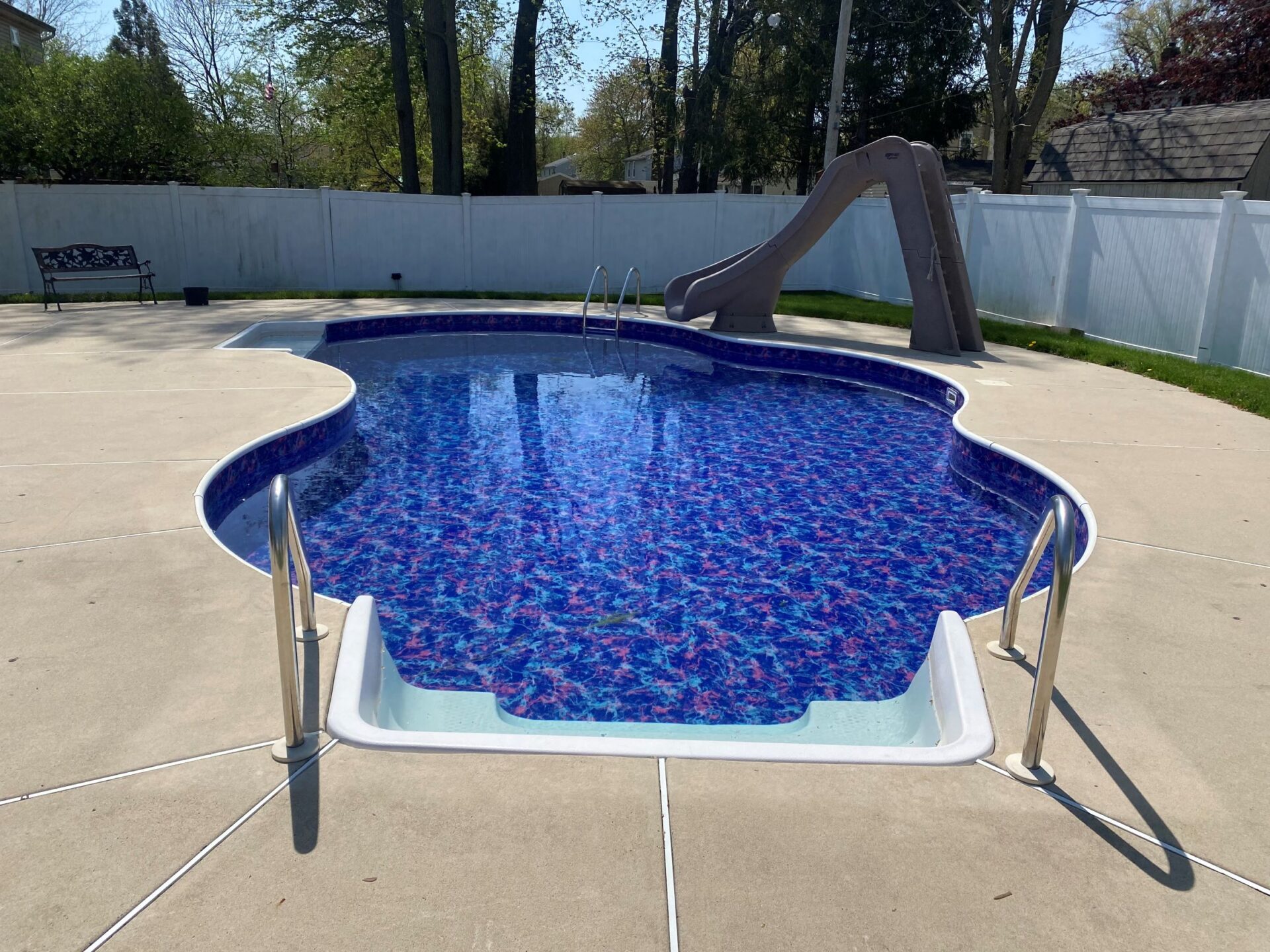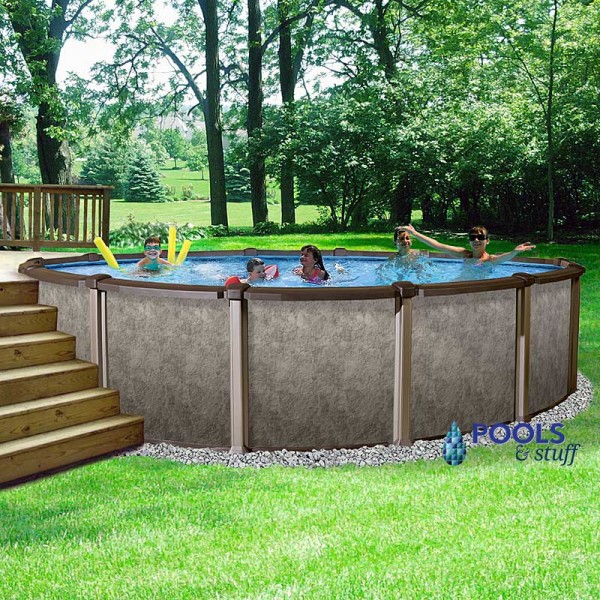Acid washing pool plaster, often overlooked but vital for optimal installation, is the subject of this informative article.
By highlighting the importance and benefits of acid washing, as well as providing guidance on proper procedure and safety measures, readers will gain a thorough understanding of this critical maintenance practice.
From enhancing pool surface appearance to removing residues, stains, and bacteria, acid washing ensures a clean and hygienic swimming environment.
It also prepares the surface for chemical adhesion and extends the lifespan of the pool plaster.
A cautionary note is emphasized to consult professionals for proper guidance and adherence to safety protocols.
Key Takeaways
- Acid washing enhances the appearance of the pool surface
- Acid washing removes residues, stains, and bacteria from the plaster
- Acid washing helps balance the pH levels of the pool water
- Acid washing extends the lifespan of the pool plaster
Importance of Acid Washing
Acid washing is a crucial step in the installation process of pool plaster. It plays a vital role in enhancing the appearance of the pool surface and ensuring its longevity. Acid washing is a highly effective method for removing residues, stains, and bacteria from the plaster. Additionally, it helps balance the pH levels of the pool water, ensuring optimal conditions for swimming and the proper adhesion of pool chemicals.
The acid washing process involves several steps. Firstly, the pool water is drained to a certain level. Then, the acid solution is diluted with water according to the manufacturer's instructions. The acid solution is then evenly applied to the pool plaster surface using a pool brush or sponge. It is important to allow the acid to sit for a specific duration recommended by professionals. Finally, the pool plaster is thoroughly rinsed with clean water to remove any remaining acid residue.
Safety measures should be taken during acid washing to protect yourself and others. It is essential to wear protective clothing, gloves, and goggles. Adequate ventilation in the pool area is crucial, and children and pets should be kept away. Direct contact with the acid solution should be avoided, and it should be disposed of responsibly following local regulations.
The frequency of acid washing depends on the condition of the pool plaster. Generally, it is recommended to acid wash the pool plaster every 3-5 years. However, visible stains, discoloration, roughness, or the presence of algae may necessitate more frequent acid washing. Regular maintenance and proper pool water chemistry can help prolong the time between acid washes. It is advisable to consult a professional to determine the appropriate frequency for acid washing your pool plaster.
While DIY acid washing may save costs, it is important to consider the risks involved. Hiring a professional ensures proper handling of acid and adherence to safety protocols. Professionals have the experience and knowledge to accurately assess the condition of the pool plaster and perform the acid washing process effectively. Incorrect acid concentration or application can lead to damage to the pool plaster, making professional assistance a wise choice, especially for larger or more complex pools.
Benefits of Acid Washing
The process of acid washing pool plaster offers several benefits for the overall maintenance and longevity of the pool surface. Acid wash benefits include enhancing the appearance of the pool surface by removing residues, stains, and bacteria from the plaster. This not only improves the visual appeal but also promotes a cleaner and healthier swimming environment.
Acid washing also helps balance the pH levels of the pool water. Over time, the accumulation of minerals and contaminants can cause the water chemistry to become imbalanced. Acid washing helps to restore the pH levels, ensuring optimal water quality and preventing issues such as algae growth and scaling.
Furthermore, acid washing prepares the surface for proper adhesion of pool chemicals. By removing any build-up or contaminants on the plaster, it allows for better penetration and effectiveness of chemicals such as chlorine or algaecides. This results in more efficient water treatment and maintenance.
Another significant benefit of acid washing is that it extends the lifespan of the pool plaster. Regular acid washing helps to remove any deterioration or damage on the surface, preventing further degradation and extending the overall durability of the plaster. This can save homeowners money in the long run by reducing the need for expensive repairs or plaster replacement.
Acid Washing Process
The acid washing process involves carefully diluting the acid solution with water and applying it evenly on the pool plaster surface. This critical step requires adherence to safety measures such as wearing protective clothing and ensuring proper ventilation.
The effectiveness of the acid washing process depends on the correct acid concentration and thorough rinsing of the pool plaster with clean water.
Acid Concentration and Safety
A precise and carefully measured acid concentration is crucial for ensuring safety during the acid washing process. Using the correct acid concentration not only maximizes the effectiveness of the cleaning but also minimizes the risk of damage to the pool plaster and potential harm to individuals involved. It is essential to follow manufacturer's instructions and adhere to safety protocols when diluting the acid with water. To further engage the audience, here is a table that highlights the recommended acid concentration for different types of pool plaster:
| Pool Plaster Type | Recommended Acid Concentration |
|---|---|
| White Plaster | 10% – 15% |
| Colored Plaster | 5% – 10% |
| Aggregate Plaster | 15% – 20% |
| Pebble Tec | 1% – 5% |
| Quartz | 5% – 10% |
Effectiveness of Acid Washing
To assess the effectiveness of the acid washing process, it is important to consider the thoroughness and precision with which the acid solution is applied and rinsed from the pool plaster surface. The acid solution should be evenly applied to ensure that all areas of the pool plaster are adequately treated. A pool brush or sponge can be used to apply the solution, ensuring that it reaches every nook and cranny.
After the acid has been allowed to sit for the recommended duration, the pool plaster must be thoroughly rinsed with clean water. This step is crucial to remove any residual acid and prevent damage to the pool plaster. The effectiveness of the acid washing process is directly related to the attention to detail during the application and rinsing stages of the pool plaster cleaning.
Once the acid washing process is complete, the next step is to drain the pool water.
Draining the Pool Water
Draining the pool water is a crucial step in the acid washing process as it allows for effective cleaning of the pool plaster surface. Proper water level management ensures that the acid solution can be evenly applied and thoroughly rinsed off.
It is important to employ proper drainage techniques to prevent damage and ensure the safety of the pool structure.
Water Level Management
Proper management of the water level is a crucial step in the acid washing process for pool plaster installation. During pool plaster maintenance, it is necessary to drain the pool water to a specific level before beginning the acid washing procedure. This ensures that the acid solution is applied evenly and effectively to the pool plaster surface.
By draining the water to the appropriate level, the acid solution can reach all areas of the pool plaster, including those that are typically submerged. This allows for thorough cleaning and removal of residues, stains, and bacteria.
Additionally, managing the water level helps prevent dilution of the acid solution, ensuring its maximum cleaning power. Proper water level management is essential for achieving optimal results during acid washing and maintaining the longevity of the pool plaster.
Importance of Draining
During the acid washing process for pool plaster installation, it is crucial to drain the pool water to a specific level. This step is essential to ensure the effectiveness of the acid wash and to prevent any damage to the pool system. Here are the reasons why draining the pool water is important during pool resurfacing with acid wash:
- Allows for a thorough cleaning: Draining the pool water allows for a more comprehensive and efficient cleaning of the pool plaster surface. It ensures that all residues, stains, and bacteria are removed effectively.
- Prevents dilution of the acid solution: Draining the pool water prevents the dilution of the acid solution, which is necessary to achieve the desired cleaning effect. Proper concentration of the acid solution ensures optimal results.
- Facilitates better adhesion: Draining the pool water ensures that the pool plaster surface is dry and free from any water contaminants. This promotes better adhesion of pool chemicals and prolongs the lifespan of the pool plaster.
- Minimizes potential damage: Draining the pool water reduces the risk of damage to the pool system, such as the filtration and circulation equipment. It also prevents any potential chemical reactions between the acid solution and pool water, which can be harmful.
Proper Drainage Techniques
To ensure the effectiveness of the acid washing process and prevent any damage to the pool system, it is crucial to drain the pool water to a specific level. Proper drainage techniques play a significant role in pool surface preparation. Draining the water allows for better access to the pool plaster, ensuring that the acid solution comes into direct contact with the surface, effectively removing stains, residues, and bacteria.
Here are some recommended drainage techniques for acid washing:
| Technique | Description | Benefits |
|---|---|---|
| Gravity Drainage | Using gravity, allow the water to flow out of the pool through a drain or a sump pump system. This technique is suitable for pools with a drain at the lowest point. | Efficient and cost-effective method. |
| Submersible Pump Drainage | Submersible pumps can be placed in the pool to pump out the water. The pump is connected to a hose that directs the water to the desired drainage area. | Provides control over the drainage process. |
| Backwash Drainage | For pools equipped with a backwash feature, the water can be drained by switching the pool's filtration system to the “backwash” mode. This allows the water to flow out through the waste line. | Convenient method if the pool has a backwash feature. |
| Professional Drainage Services | Hiring professional pool technicians who specialize in acid washing can ensure proper drainage techniques are used. They have the expertise and equipment to drain the pool efficiently and safely. | Offers convenience and reduces the risk of potential damage. |
Diluting the Acid Solution
The acid solution for pool plaster washing should be diluted according to the manufacturer's instructions. Diluting the acid solution properly is crucial to ensure the safety of the pool surface and achieve effective results. Here are four important considerations when diluting the acid solution for pool plaster washing:
- Follow manufacturer's instructions: Different acid products may have specific dilution ratios and guidelines provided by the manufacturer. It is essential to carefully read and follow these instructions to ensure the acid solution is properly diluted.
- Use the correct water-to-acid ratio: Diluting the acid solution with water is necessary to reduce its acidity and prevent potential damage to the pool plaster. The specific water-to-acid ratio will depend on the type and concentration of the acid being used. Following the recommended ratio is essential for achieving the desired results without compromising the integrity of the plaster surface.
- Mix the solution thoroughly: Once the acid and water are combined, it is important to mix the solution thoroughly to ensure a uniform distribution of the acid. This can be done by gently stirring the solution with a non-reactive material, such as a plastic or wooden stir stick. Avoid using metal objects as they can react with the acid.
- Consider safety precautions: When diluting the acid solution, it is crucial to follow proper safety measures. Wear protective clothing, gloves, and goggles to prevent direct contact with the acid. Additionally, ensure proper ventilation in the area to minimize exposure to fumes. Dilute the acid solution in a well-ventilated space or outdoors to further reduce the risk of inhalation.
Applying the Acid Solution
After diluting the acid solution according to the manufacturer's instructions, the next step in the acid washing process is to apply the solution evenly on the pool plaster surface. This step is crucial as it ensures that the acid can effectively remove stains, residues, and bacteria from the plaster. To achieve an even application, it is recommended to use a pool brush or sponge, avoiding direct contact with the skin.
To emphasize the importance of applying the acid solution evenly, we can use a table to compare the results of an even application versus an uneven one:
| Even Application | Uneven Application |
|---|---|
| Consistent removal of stains, residues, and bacteria from the entire surface. | Uneven removal of stains, residues, and bacteria, leading to patchy results. |
| Equal exposure of the plaster to the acid solution, ensuring a balanced and uniform appearance. | Unequal exposure of the plaster, resulting in an inconsistent and blotchy appearance. |
| Better preparation of the surface for proper adhesion of pool chemicals. | Inadequate preparation of the surface, potentially leading to poor chemical adhesion. |
It is important to note that during the application process, safety measures should be followed. This includes wearing protective clothing, gloves, and goggles to minimize the risk of chemical contact with the skin and eyes. Additionally, proper ventilation in the pool area should be ensured to dissipate any fumes generated during the acid washing process.
Allowing the Acid to Sit
Once the acid solution has been evenly applied to the pool plaster surface, it is imperative to allow it to sit for a specific duration recommended by professionals. This step is crucial in ensuring that the acid effectively removes any residues, stains, or bacteria from the pool plaster.
Here are four important considerations during the waiting period of an acid wash for the pool:
- Recommended Timeframe: Professionals typically recommend allowing the acid to sit on the pool plaster for 10 to 15 minutes. This timeframe allows the acid to penetrate the surface and break down any contaminants effectively.
- Monitoring the Reaction: During this waiting period, it is essential to monitor the reaction of the acid with the pool plaster. The acid may cause a slight fizzing or bubbling action, indicating that it is actively dissolving the impurities. However, if there is excessive bubbling or any signs of damage to the plaster, it is crucial to rinse the acid off immediately.
- Safety Precautions: While waiting, it is important to adhere to safety precautions. Ensure proper ventilation in the pool area, wear protective clothing, gloves, and goggles, and keep children and pets away from the pool. Handling acid requires caution to prevent any accidents or injuries.
- Timing Accuracy: To achieve optimal results, it is crucial to follow the recommended timeframe accurately. Leaving the acid on the pool plaster for too long can damage the surface, while removing it too soon may not effectively clean the plaster. Professional guidance is essential to ensure the correct timing.
Once the recommended duration has passed, it is time to proceed to the next step of the acid washing process: rinsing the pool plaster. This step will remove the acid residue and thoroughly clean the surface, preparing it for further treatment or the refilling of the pool.
Rinsing the Pool Plaster
During the rinsing process, it is essential to thoroughly remove the acid residue from the pool plaster surface to ensure a clean and prepared surface for further treatment or refilling of the pool. Rinsing is a critical step in pool plaster restoration as it helps eliminate any remaining acid solution and prevents any potential damage to the plaster.
To start the rinsing process, it is recommended to use a high-pressure hose or pressure washer to remove the acid residue effectively. Begin rinsing from the top of the pool and work your way down, ensuring that all areas of the plaster are thoroughly rinsed. Pay close attention to corners, steps, and other hard-to-reach areas to ensure complete removal of the acid residue.
It is important to continue rinsing until the water runs clear and there is no visible sign of acid residue on the pool plaster surface. This ensures that the pool plaster is free from any chemicals that could potentially affect the water chemistry or cause damage to the plaster itself.
Once the rinsing process is complete, it is advisable to perform a final inspection to ensure that there are no traces of acid residue left on the pool plaster surface. This step is crucial in preparing the surface for further treatment or refilling of the pool.
Now that we have discussed the importance of thoroughly rinsing the pool plaster, it is crucial to understand the safety measures that need to be taken during the entire acid washing process. Ensuring the safety of yourself, others, and the pool is of utmost importance.
Safety Measures During Acid Washing
To ensure a safe acid washing process and protect both individuals and the pool, it is imperative to implement proper safety measures. Here are some acid wash recommendations to consider:
- Wear protective clothing, gloves, and goggles: Acid can cause severe burns and eye damage, so it is essential to wear the appropriate protective gear. This includes long sleeves, pants, rubber gloves, and safety goggles to prevent any direct contact with the acid solution.
- Ensure proper ventilation in the pool area: Acid fumes can be harmful if inhaled, so it is crucial to have adequate ventilation in the pool area. Open windows and doors or use fans to circulate fresh air during the acid washing process.
- Keep children and pets away from the pool during acid washing: Restrict access to the pool area and ensure that children and pets are kept at a safe distance. Acid washing involves hazardous chemicals, and it is essential to prevent any accidental exposure or ingestion.
- Use a pool brush or sponge to apply the acid solution, avoiding direct contact with the skin: When applying the acid solution to the pool plaster surface, it is important to use a pool brush or sponge to minimize direct contact with the skin. This reduces the risk of chemical burns or skin irritation.
By following these acid wash recommendations, you can ensure a safe and effective acid washing process for your pool plaster.
Remember to dispose of the acid solution responsibly, following local regulations, to minimize environmental impact. Safety should always be the top priority when performing any maintenance procedures on your pool.
Frequently Asked Questions
How Long Does the Acid Washing Process Typically Take?
The acid washing process typically takes several hours to complete, depending on the size of the pool and the condition of the plaster surface.
It involves draining the pool water to a certain level, diluting the acid solution according to manufacturer's instructions, applying it evenly on the pool plaster, allowing it to sit for a specific duration, and rinsing thoroughly with clean water.
It is crucial to follow safety measures, wear protective gear, and consult professionals for accurate guidance throughout the process.
Can Acid Washing Be Done on All Types of Pool Plaster?
Acid washing is a critical step in maintaining the appearance and longevity of pool plaster. While it is generally suitable for most types of pool plaster, it is essential to consider the specific material used.
Certain types of plaster, such as colored or specialized finishes, may require alternative cleaning methods to avoid discoloration or damage. Consulting with a professional is recommended to ensure compatibility and to determine the most appropriate cleaning approach for your specific pool plaster.
What Are the Potential Risks or Dangers Associated With Acid Washing?
Potential Risks or Dangers Associated with Acid Washing
- Acid washing should be performed by trained professionals to minimize risks.
- Improper handling of acid can lead to chemical burns, eye irritation, or respiratory problems.
- Accidental spills or splashes can damage surrounding surfaces or vegetation.
- Excessive acid exposure can weaken the pool plaster, causing it to become rough or brittle.
- Acid washing should not be done on damaged or deteriorated plaster, as it can exacerbate the issues.
Following safety guidelines, using proper protective equipment, and consulting professionals can mitigate these risks.
Are There Any Alternative Methods to Acid Washing for Cleaning Pool Plaster?
There are alternative methods to acid washing for cleaning pool plaster.
One such method is using a non-acidic cleaner specifically designed for pool surfaces. These cleaners are formulated to remove stains, residues, and bacteria without the need for acid.
Other alternatives include pressure washing or sanding the surface to remove stubborn stains or roughness. However, it is important to note that these methods may not be as effective as acid washing and may require more time and effort to achieve desired results.
It is recommended to consult with a professional to determine the most appropriate method for cleaning pool plaster.
Can Acid Washing Be Done While the Pool Is Filled With Water?
Acid washing is a crucial process in maintaining the cleanliness and longevity of pool plaster. However, one must not attempt acid washing while the pool is filled with water. This is because the acid solution needs to be applied directly to the plaster surface and allowed to sit for a specific duration to effectively remove stains, residues, and bacteria.
In order to ensure the safety and effectiveness of the acid washing process, it is essential to drain the pool water to a certain level before proceeding.





